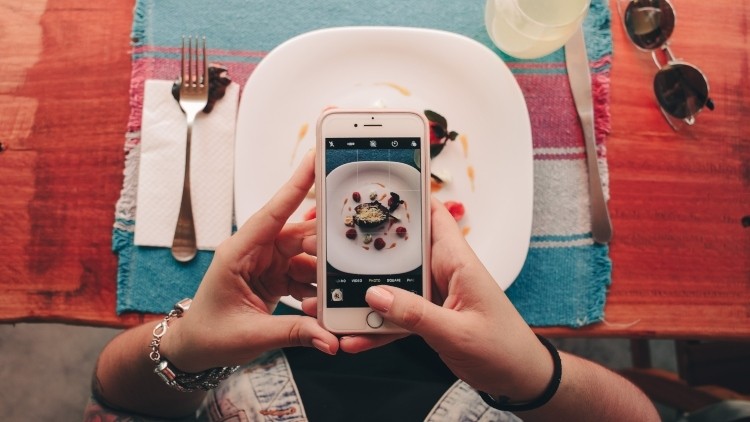Analysis
Is social media creating unrealistic expectations around food?

Many would be inclined to believe that, due to an increase in the number of food programmes on television and the rise of eating out occasions over recent years, consumers know what they’re talking about when it comes to food.
Yet there is talk among operators that, for a variety of reasons, the punters aren’t as well-informed as we may have believed.
If this is true, then who or what is to blame? There is thought that social media, along with the success of the casual-dining chains, are both creating wrong and unrealistic consumer expectations around food.
Huge impact
Over the past decade, a lot has changed in the hospitality sector. It’s fair to say that social media has had a huge impact on a restaurant’s concept design, retail and marketing, and even on menu curation. With that said, it has become increasingly clear how social media has – and will – continue to shape the culinary landscape.
Social media platforms such as Instagram, Twitter, Facebook and Snapchat have given consumers the power to spread information to hundreds, if not thousands, of people in just a matter of seconds. For the restaurant industry, which relies heavily on reviews and recommendations, this means every customer now has the title of a ‘highly acclaimed critic’.
A recent study revealed that 47% of Millennials say they text, tweet and Instagram while they eat – a concept that 10 years ago would have seemed rude. Now, we are noticing that those consumers have the highest spending power.
Snapping pictures of the meals and snacks we eat is a key part of eating out for many Millennials, but it may be ruining the dining experience for everyone in ways we hadn’t even realised.
Heath Ball, owner of the Red Lion & Sun in north London’s leafy suburb of Highgate, believes consumers’ expectations of what food should look and taste like has become “boring and unrealistic”.
“Due to the number of cooking programmes such as MasterChef, everyone has become a self-proclaimed expert and expectation, in some cases, has become simply unrealistic,” fumed Ball.
“They can’t boil an egg at home, but they’ll be happy to tell you that their risotto is too wet.
“Around 10 years ago, if you said burrata, people would have no idea.
“Now it’s standard on most pizza chain menus, resulting in customers being more product-aware.”
Ball added that he believes social media has played a big part in the “struggling” casual-dining sector and has, in essence, made it “soulless”.
“With social media, you see the food – in some cases – not in its best light. The Big Mac never looks like it does in the adverts, does it?” questioned Ball.
“I think the whole experience of eating out has become a soulless, faceless transaction.
“Since the whole eating-out occasion has become a sport, people want to be the first to try a new restaurant, the first to try the new dish and the first to post it on every social media platform possible.
“Customers ‘Google’ the place they’re going to eat, read the reviews, book online, turn up to take photos for social media and, in most cases now, pay by an app and leave.
“Since it has become such a transaction, people do not care if they fail to turn up to their booking or treat the staff with respect.”
Rude but influential
With some casual-dining chains suffering when a downturn in the market happens, Ball concluded that he can see why.
“I just think people do not care and, as I reiterate, the whole eating-out occasion has become a transaction fuelled by private equity money in order to make profit,” said Ball.
“Consumers now book a table online, show up, sit down, take a photo of their food – and maybe a picture of a neon sign saying something to inspire fun – then sit on their phone for the rest of the meal to tell their friends, who aren’t there, how much fun they are having.”
Ball has a point – those who take pictures and sit on their phones can come across as rude – however, social influencers such as bloggers, vloggers or even celebrities with a large social media presence or reputable publication, can raise the profile of a restaurant, bar or pub in an instant.
It’s not just because of the disruption and incessant camera flashes of photographing food – something that many leading gastropubs have now banned – Instagram is influencing the food we eat and the environment we eat in.
Daily challenge
Brendan Padfield, owner of the Unruly Pig in Bromeswell, Suffolk, believes that due to the social media shift, restaurants must be proactive in their offensive and defensive strategies of protecting their reputations.
“Our number one business aim at the Unruly Pig is to build the reputation for being reliably great and that is a daily challenge,” Padfield explained.
“Social media and the focus on appearance has arguably helped the independent sector as it is they who can deliver something different to the pack.
“But what social media can feed, however, is too great a focus on style over flavour and goodness.
“The Unruly Pig’s approach is different because our head chef Dave Wall focuses on flavour and the quality of the ingredients above everything else.
“The look of the dish is always important but, to us, it’s always a secondary consideration.
“That philosophy has served us well so far as we continue to grow with our Millennial customer base significantly on the up.”
Unrealistic expectations
Padfield told of his frustration about customers who complain about the speed of service and says this is due to “unrealistic consumer expectations” around food.
“Consistency is always the challenge for any restaurant,” Padfield explained.
“Above all, a warm welcome and service that is as good as the food is most important.
“Cooking fresh, healthy food to order is never going to be as speedy as pre-prepped, fried or microwaved meals.
“We once had a customer complain three times in 20 minutes about the tardy delivery of their ordered risotto.
“We can’t reasonably cook a risotto any quicker, but some chains often can, and that’s where these expectations come from.”
Another challenge facing the casual-dining sector is “too many” cookie-cutter dishes on menus, Padfield said.
“In some ways, chains have had a negative effect in some of the needs and desires of older generations,” he explained.
“Too many want cookie-cutter dishes, which are variations on a theme of bangers and mash, steak and burgers, battered fish and chips, sticky toffee pudding and so on.
“Now don’t get me wrong, I love all those dishes, but they can dominate too much on far too many menus.”
Padfield stated chains that provide “something different” will be the ones to survive and prosper.
“About 50 years ago, the UK was hardly a beacon for great food,” said Padfield. “Before Jamie’s Italian Restaurants, who would have thought that spaghetti, arrabbiata, or arancini, would become a kind of staple in the UK?
“People are better informed and the chains have played their part in spreading the word.
“Some chains deliver unambitious or safe options, but those that choose to keep it original can sustainably triumph as, after all, different is good.”
One thing is for sure, it’s going to be interesting to see how chains will continue to come up with new, creative solutions. And with mounting concerns over food costs, the implications of Brexit, and overcapacity in the restaurant sector as a whole, casual-dining and quick-serve restaurants are expected to face increased pressure in 2019.
Social media may play a factor in difficulty, but the question remains: is it to blame or are consumers using it as a way to split the good from the bad?
A restaurant’s reputation is everything, and what consumers are seeing on social media, is informing their decisions on where to eat. These social sharing platforms allow everyone to become a ‘foodie’ and publicists no longer control the reputation of the restaurant; customers do.







